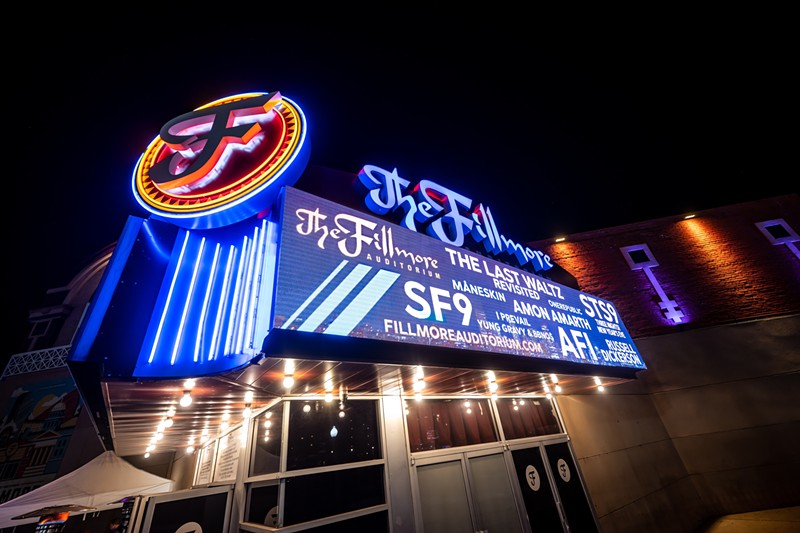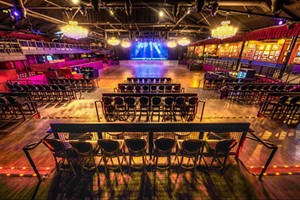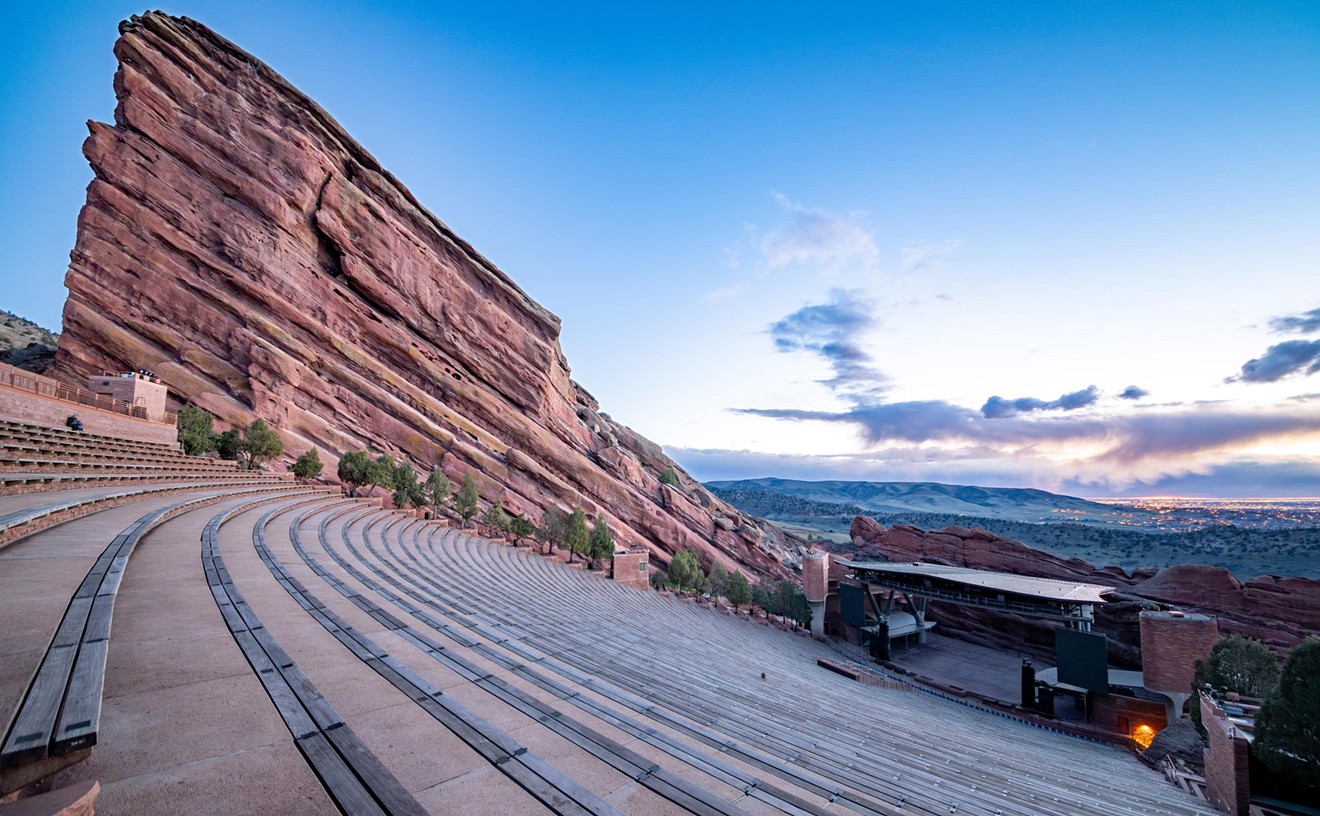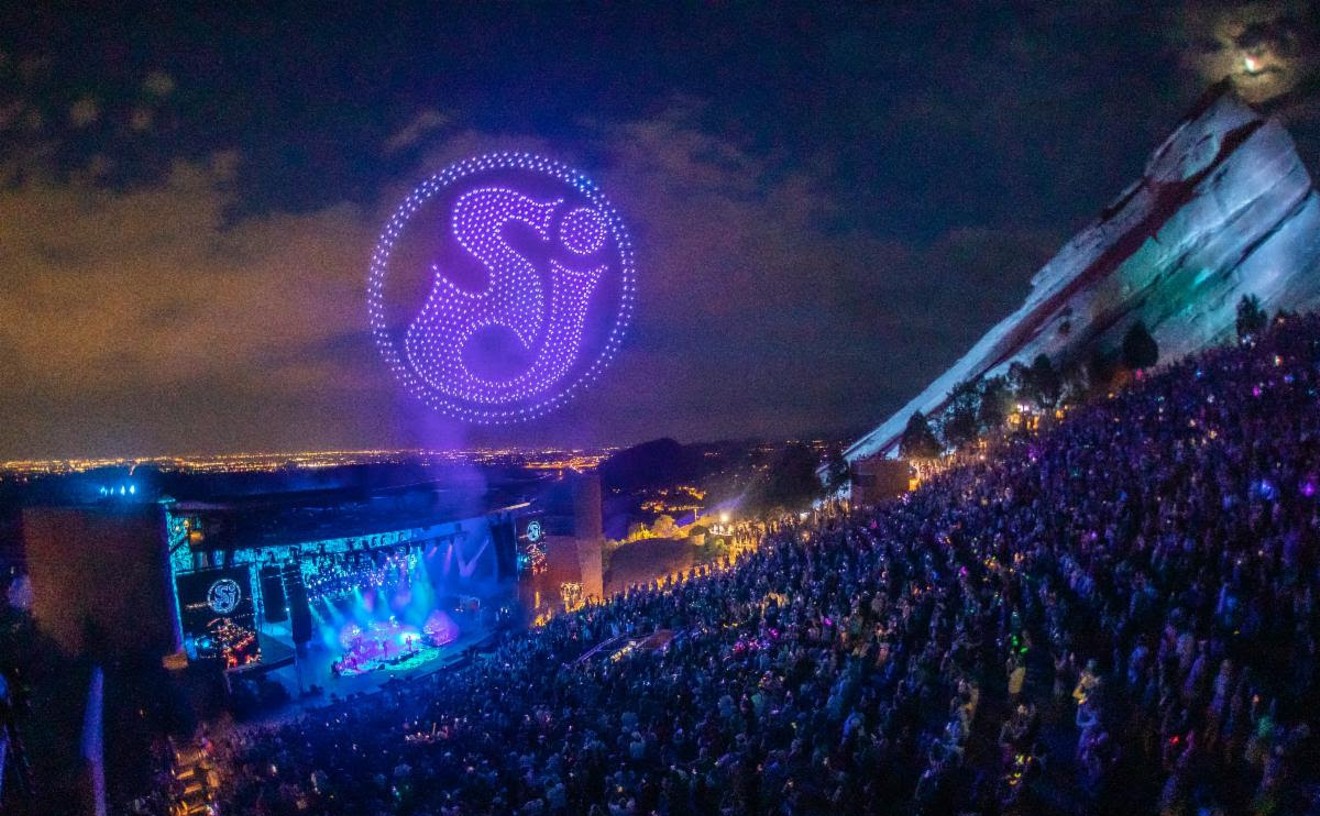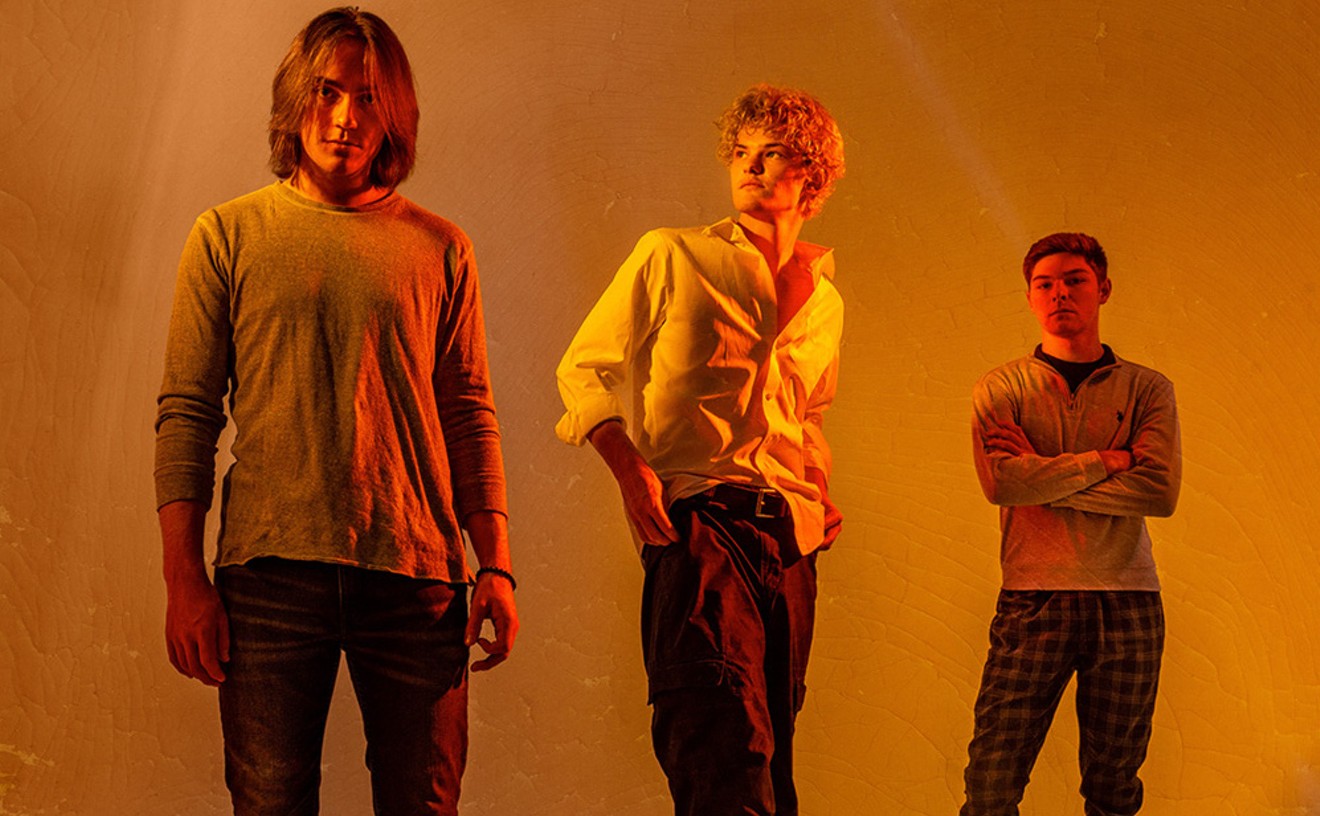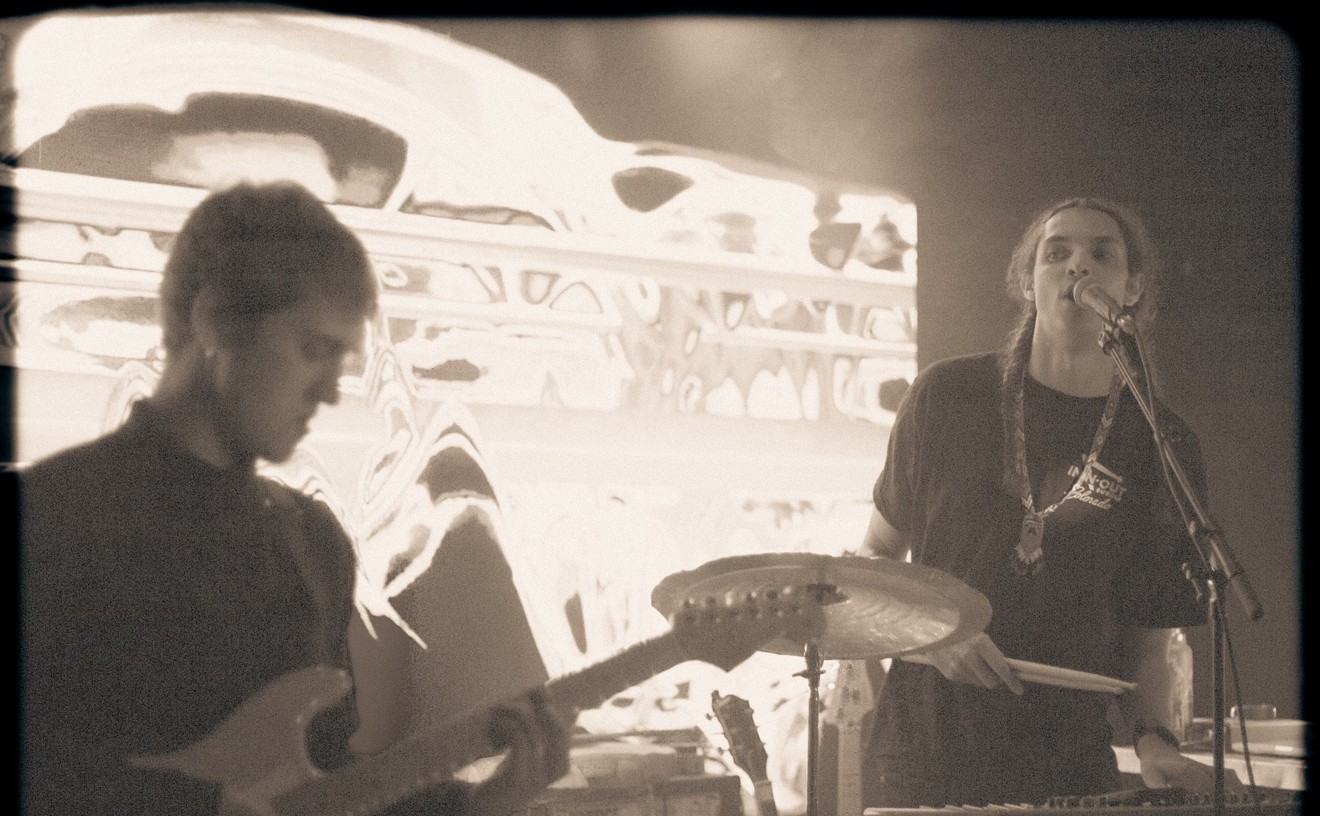What started as a hub for roller skating in early-twentieth-century Denver has evolved into a sanctuary for music aficionados. Located in the heart of the Capitol Hill neighborhood at 1510 Clarkson Street, the Fillmore Auditorium has witnessed the city's cultural shifts firsthand, adapting to each new wave while maintaining its historic essence.
"The Capitol Hill neighborhood has been an incredible place to call home, and we’re lucky to have such great relationships with our neighbors," says general manager Joe Petrie. "The Fillmore Auditorium welcomes an incredibly varied roster of artists every year. With such depth and diversity in our show calendar, we offer concerts all music fans enjoy."
The 30,000-square-foot venue, owned and operated by Live Nation since 1999, has become one of the top-grossing indoor music venues, but it was not always that way. It first opened in 1907 as the Mammoth Roller Skating Rink and quickly became a popular hangout for Denver's youth before closing in 1910. The building was subsequently occupied by the Fritchle Automobile & Battery Company. Before shutting down in 1917, the plant produced more than 500 vehicles, the first of which was famously purchased by Titanic survivor Margaret "Molly" Brown.
The structure has served many functions over the years, including as the Mammoth Garden Roller Club from 1935 to 1962 and a warehouse for the Colorado Mercantile Company from 1962 to 1967, before promoter Stuart Green purchased it and changed the name to Mammoth Gardens in 1968. He transformed the space from an ice rink into a nightclub where such rock icons as the Grateful Dead, the Who and Jimi Hendrix entertained fans.
But two years later, the city closed Mammoth Gardens in an attempt to improve the area's reputation. It briefly reopened as a farmers' market, known as the Market, and housed Denver's first recreational center to offer sports such as basketball, hockey, ice polo and ice skating. The site operated as Mammoth Gardens again in 1981, when it hosted sports games, concerts and private events, but closed after fourteen months because of conflict between the owners.
In 1985, Manuel and Magaly Fernandez purchased and renovated the space so it could reopen as a music venue once more, which they named Mammoth Events Center. It brought top-tier musical acts to Colorado, including Ozzy Osbourne, Blink-182, Coldplay, Oasis, Cyndi Lauper and the Beastie Boys. In the late 1990s, the venue underwent significant renovations. Chuck Morris and Bill Graham purchased the space in February 1999 and spent millions renovating it, renaming it the Fillmore Auditorium, after the legendary Fillmore in San Francisco, which Graham also owned.
These enhancements restored the structure's architectural grandeur, installed cutting-edge sound and lighting systems and increased capacity to 3,700. The venue opened on May 19, 1999, with the Trey Anastasio Band playing the inaugural show. Since the auditorium opened, it has hosted artists such as Bad Religion, Bob Dylan, Coldplay, David Bowie, Erykah Badu, Foo Fighters, Marilyn Manson, NOFX, Owl City, Paramore and Widespread Panic.
"The Fillmore Auditorium attracts many up-and-coming artists," says Petrie. "I was lucky to catch Mumford & Sons here in 2012 and Alt-J on their An Awesome Wave tour the same year. Chance the Rapper’s 2016 tour date is also a standout."
Today the Fillmore is managed by Live Nation and continues to attract a diverse array of performers. When asked about the day-to-day operations, Petrie describes a bustling environment that changes based on the needs of the artists. "Our team approaches each show day with the goal to provide a memorable artist and fan experience at the Fillmore Auditorium," he says. "From operations to box office to housekeeping to security to the food and beverage team, we all work together to provide a top-notch hospitality experience, from the pit to backstage."
In 2017, the Fillmore Auditorium underwent a significant renovation, marking its first major update in over a decade. The project aimed to improve the backstage area by increasing the size, and updating green rooms, adding fifty new bathrooms, installing modern amenities such as new furniture, TVs and showers, and expanding the space to a capacity of 3,900. A key addition was the full-service kitchen, which serves high-quality meals to artists and their crews nightly.
Looking to the future, the Fillmore has exciting plans to preserve its iconic Romanesque architecture while also introducing innovative programming to keep up with the evolving entertainment landscape. "We’re currently preserving these towers so that they continue to be a part of Denver’s beautiful skyline," Petrie says. "We’re also looking forward to our current show calendar, with upcoming events like Belle & Sebastian, GUNNA, Marcus King, Madison Beer and more."
From its humble beginnings as a roller rink in 1907 to its current status as a premier music venue, the Fillmore represents the evolution of Denver's cultural landscape. Through each transformative era, it has not only adapted to meet the changing needs of artists and audiences, but has also maintained its historic essence, continuing to resonate with both music lovers and artists.
Learn more about the Fillmore Auditorium and its upcoming shows at fillmoreauditorium.org.
[
{
"name": "Air - MediumRectangle - Inline Content - Mobile Display Size",
"component": "12017618",
"insertPoint": "2",
"requiredCountToDisplay": "2",
"watchElement": ".fdn-content-body",
"astAdList": [
{
"adType": "rectangle",
"displayTargets": "mobile"
}
]
},{
"name": "Editor Picks",
"component": "17242653",
"insertPoint": "4",
"requiredCountToDisplay": "1",
"watchElement": ".fdn-content-body",
"astAdList": [
{
"adType": "rectangle",
"displayTargets": "desktop|tablet"
},{
"adType": "rectangle",
"displayTargets": "desktop|tablet|mobile"
}
]
},{
"name": "Inline Links",
"component": "18838239",
"insertPoint": "8th",
"startingPoint": 8,
"requiredCountToDisplay": "7",
"maxInsertions": 25
},{
"name": "Air - MediumRectangle - Combo - Inline Content",
"component": "17261320",
"insertPoint": "8th",
"startingPoint": 8,
"requiredCountToDisplay": "7",
"maxInsertions": 25,
"watchElement": ".fdn-content-body",
"astAdList": [
{
"adType": "rectangle",
"displayTargets": "desktop|tablet"
},{
"adType": "rectangle",
"displayTargets": "desktop|tablet|mobile"
}
]
},{
"name": "Inline Links",
"component": "18838239",
"insertPoint": "8th",
"startingPoint": 12,
"requiredCountToDisplay": "11",
"maxInsertions": 25
},{
"name": "Air - Leaderboard Tower - Combo - Inline Content",
"component": "17261321",
"insertPoint": "8th",
"startingPoint": 12,
"requiredCountToDisplay": "11",
"maxInsertions": 25,
"watchElement": ".fdn-content-body",
"astAdList": [
{
"adType": "leaderboardInlineContent",
"displayTargets": "desktop|tablet"
},{
"adType": "tower",
"displayTargets": "mobile"
}
]
}
]

